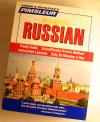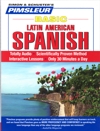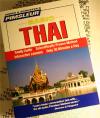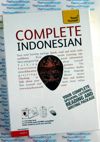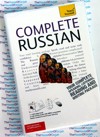Italian Phrasebook - Lonely Planet
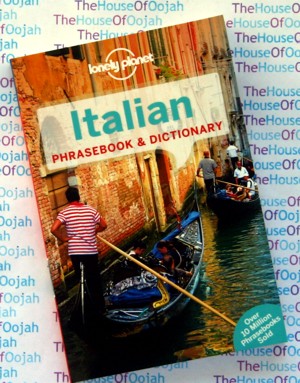
Lonely Planet Italian PhrasebookIncludes a Phrasebook 3500 two way dictionary Other Learn to Speak Italian Books and Audio click here |
 |
| Lonely Planet Italian Phrase Book paperback 130gramsWhen even a easy sentence sounds like an aria, it’s nearly impossible to resist striking up a discussion in Italian. Besides, all you need for la dolce vita is to be able to tell your Moschino from your macchiato and your Fellini from your fettuccine! Get More From Your Trip with Easy-to-Find Phrases for Every Travel Situation! Lonely Planet Phrasebooks have been connecting travellers and locals for over a quarter of a century Order the right meal with our menu decoder Never get stuck for words with our 3500-word two-way dictionary We make language easy with shortcuts, key phrases & common questions and answers Feel at ease, with recommended tips on culture & manners includes Basics, Practical, Social, Safe Travel, Food! About the Italian LanguageItalian is mostly a Romance language spoken by about 63 million people, primarily in Italy. In Switzerland, Italian is truly four official languages. In addition the state run language of San Marino and Vatican City. Standard Italian, adopted because of the state as soon as unification of Italy, uses Tuscan dialect and is somewhat intermediate between Italo-Dalmatian languages associated with the South and Northern Italian dialects belonging to the North. Unlike a lot of Romance languages, Italian has retained the contrast between long and short consonants which existed in Latin. That is to say most Romance languages, stress is distinctive. Belonging to the Romance languages, Italian is recognized as that needs to be one of several closest resembling Latin as far as vocabulary, though Romanian most closely preserves the noun declension system of Classical Latin, and Spanish the verb conjugation system , while Sardinian is among the most conservative with regard to phonology. In Italy, all Romance languages spoken given that the vernacular in Italy, other than standard Italian along with other unrelated, non-Italian languages, are termed "Italian dialects". Many Italian dialects are, in actual fact, historical languages in themselves. These comprise of recognized language groups as well as Friulian, Neapolitan, Sardinian, Sicilian, Venetian, and others, and regional variants of these languages which can include Calabrian. Though the division between dialect and language also has been used by scholars (as an example by Francesco Bruni) to distinguish between the languages that made up the Italian koine, tough but are which in fact have small amount of or no part in it, like for example Albanian, Greek, German, Ladin, and Occitan, which can be still spoken by minorities. Dialects have proven to be not put to use in general mass communication and they are usually limited to native speakers in informal contexts. Up to now, speaking in dialect was often deprecated in the form of sign of poor education. Younger generations, in particular those under 35 (though it may vary in different areas), speak almost exclusively standard Italian to all of situations, usually with local accents and idioms. Regional differences could possibly be recognized by various factors: the openness of vowels, the duration of the consonants, and influence associated with the local dialect (here is an example, annà replaces andare in the area of Rome for any of the infinitive "to go"). Unlike the majority of Romance languages, Italian has retained the contrast between long and short consonants which existed in Latin. As in most Romance languages, stress is distinctive. Associated with the Romance languages, Italian is known as that must be among the many closest resembling Latin regarding vocabulary, though Romanian most closely preserves the noun declension system of Classical Latin, and Spanish the verb conjugation system , while Sardinian is easily the most conservative lighting options phonology. Unlike the majority of Romance languages, Italian has retained the contrast between long and short consonants which existed in Latin. As in most Romance languages, stress is distinctive. Associated with the Romance languages, Italian may be known as turn out to be among the closest to Latin on the subject of vocabulary. Lexical similarity is 89% with French, 87% with Catalan, 85% with Sardinian, 82% with Spanish, 78% with Rhaeto-Romance, 77% with Romanian, and 52% with Maltese. Italian is most closely related to another two Italo-Dalmatian languages, Sicilian along with the extinct Dalmatian. Three of the are section of the Italo-Western grouping associated with the Romance languages, which have been a subgroup associated with the Italic branch of Indo-European. The total speakers of Italian as maternal language are between 60 and 70 million. The speakers who use Italian as second or cultural language are estimated around 110-120 million. Italian stands out as the official language of Italy and Capital Of San Marino, and one belonging to the official languages of Switzerland, spoken mainly in Ticino and Grigioni cantons, a region referred to as Italian Switzerland. Furthermore the second official language in a few areas of Istria, in Slovenia and Croatia, where an Italian minority exists, in the same way contained in the Croatian city of Rijeka right out front of Istria. Without a doubt the primary language associated with the Vatican City and is particularly widely used and taught in Monaco and Malta. But also widely understood in France with more than one million speakers (especially in Corsica and the County of Nice, areas that historically spoke Italian dialects before annexation to France), as well as in Albania. Italian can be usually spoken by some in former Italian colonies in Africa (Egypt, Libya, Somalia, Tunisia, Ethiopia, and Eritrea). However, its use has sharply dropped off since the colonial period. In Eritrea, Italian is widely understood . The fact is, for half a century, by means of colonial period, Italian was the language of education, but as of 1997, there was clearly only one Italian-language school remaining, with 470 pupils. Numerous Italian speakers may increase a little when buy students enrolling and studying in that remaining Italian-language school increases and Eritrea is the only African nation where Italian is widely spoken and understood. In Somalia, Italian had previously been a major language but because of civil war and lack of education, only the older generation still uses it. In Egypt and Tunisia, it truly is mostly spoken by Italian Egyptians and Italian Tunisians a lot of professionals of non-Italian descent. In all belonging to the mentioned former Italian African colonies, a lot of the fluent Italian speakers are also the returnees of their respective countries who grew up in officially Italian-speaking nations, most especially Italy. Italian and Italian dialects are widely used by Italian immigrants and plenty of of their descendants (see Italians) living throughout Western Europe (especially France, Germany, Belgium, Switzerland, take pleasure in the and Luxembourg), usa, Canada, Australia, and Latin America (especially Uruguay, Brazil, Argentina, and Venezuela). Inside, Italian speakers are most commonly found in four cities: Boston (7,000), Chicago (12,000), New York (140,000), and Philadelphia (15,000). As per the United States Census in 2000, over 1 million Italian Americans spoke Italian inside your house, when using the largest concentrations (nearly half) perfectly located at the states of the latest York (294,271) and New Jersey (116,365). In Canada, Italian may well be the fourth most commonly-spoken language with 661,000 speakers (or ~ 2.1% belonging to the population) depending on 2006 Census. Particularly large Italian-speaking communities are found in Montreal (~ 179,000) and Toronto (~ 262,000). Italian may well be the second most commonly-spoken language in Australia, where 353,605 Italian Australians, or 1.9% of the population, reported speaking Italian in their home in a very 2001 Census. In 2001 there was clearly 130,000 Italian speakers in Melbourne, and 90,000 in Sydney. Out of the late 19th path of the mid 20th century, many hundreds of Italians settled in Argentina, Uruguay and southern Brazil, where they formed a very strong physical and cultural presence (see the Italian diaspora). In some respect, colonies were established where variants of Italian dialects were put to use, as well as some continue using a derived dialect. A good example is Rio Grande do Sul, Brazil, where Talian is commonly employed and in the town of Chipilo near Puebla, Mexico each continuing try using a derived as a type of Venetian dating back to to the 19th century. Another example is Cocoliche, an Italian-Spanish pidgin once spoken in Argentina and especially in Capital Of Argentina, and Lunfardo. Rioplatense Spanish, and particularly the speech belonging to the capital of scotland- Capital Of Argentina, has intonation patterns that resemble the ones from Italian dialects, because that Argentina had a constant, large influx of Italian settlers since the second 1 / 2 of the nineteenth century; initially primarily from The North Of Italy then, since the start of twentieth century, mostly from Southern Italy. Starting in late medieval times, Italian language variants replaced Latin to start to be that individuals choose to commercial language for much of Europe and Mediterranean And Beyond (especially the Tuscan and Venetian variants). This became solidified by means of Renaissance together with the strength of Italian banking along with the rise of humanism belonging to the arts. Throughout the Renaissance, Italy held artistic sway all over the rest of Europe. All educated European gentlemen were in order to increase the risk for Grand Tour, visiting Italy to see its great historical monuments and projects. It thus became expected that educated Europeans would learn at the least some Italian; the English poet John Milton, one example is, wrote a portion of his early poetry in Italian. In England, Italian took over as the second most widely known modern language to become or stay learned, after French (though the classical languages, Latin and Greek, came first). However, because of the late eighteenth century, Italian very replaced by German as you move the second modern language found on the curriculum. Yet Italian loanwords keep on being used divorce lawyers atlanta other European languages in matters of art and music. Today, the Italian language is still used as a general lingua franca a number of environments. Belonging to the Catholic church Italian is well known because of a large a part of the ecclesiastic hierarchy, and is also used in substitution of Latin in some official documents. The existence of Italian for the reason that primary language along at the Vatican City indicates but not only easy use in the Holy See, but in addition worldwide where an episcopal seat is present. It continues to used in music and opera. Other examples where Italian is sometimes used to provide a means of communication is in some sports (sometimes in football and motorsports) and in the design and style and fashion industries. |
Lonely Planet Italian Phrase Book and Dictionary |

 0 Items (Empty)
0 Items (Empty)
